
| Photos From Wyoming Tales and Trails This page: Worland continued, Ten Sleep, Battle of Bates Creek, Manderson. |
 |

| Photos From Wyoming Tales and Trails This page: Worland continued, Ten Sleep, Battle of Bates Creek, Manderson. |
 |
|
|
|
About This Site |
|
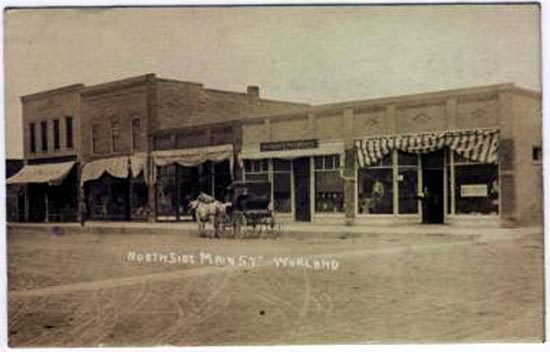 North side of Big Horn Ave., 1912. Rupp's Busy Corner with the awning. Photo by Rico Huron Stine (attributed). As shown by the next photo, A. G. Rupp, in 1913 Rupp sold out to Joseph F. Hampton who changed the name of the business to the Washakie Trading Company. Rupp moved at first to California, laer to Washington State, and then back to California.
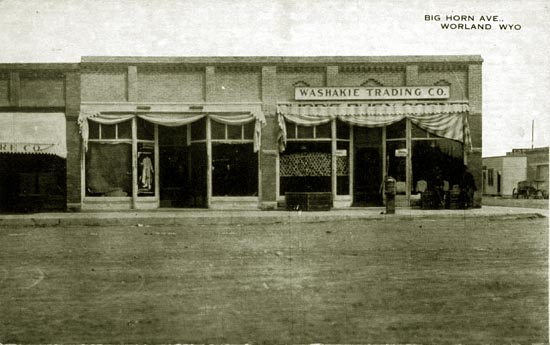 Washakie Trading Company. Photo by R. H. Stine (attributed). The gas pump was added in 1919. In 1922, the store was burlarized. The Grit tied the burglary to the street lights going out each night, rendering the town marshal powerless because of his inability to see anything in the dark. Following the death of Hampton in the 1930's, his widow continued to operate the busines although in a different location. Thus, other mercantile businesses occupied the location.
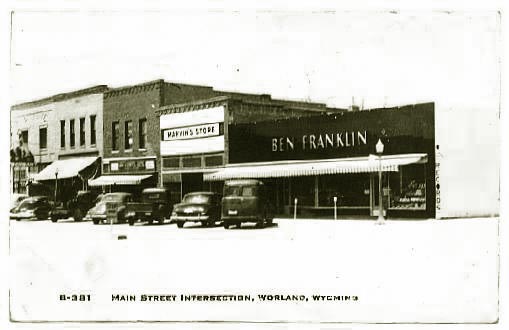 Ben Franklin Store on site of Washakie Trading Company, approx. 1950.
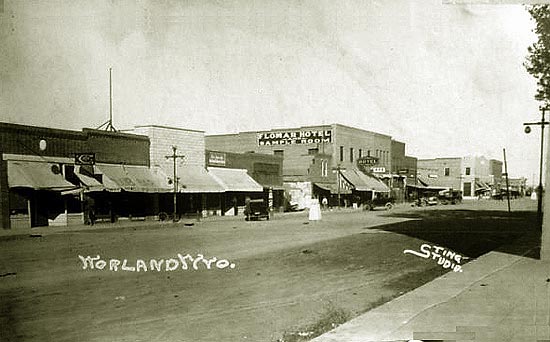 Big Horn Ave., 1930's. Photo by R. H. Stine. Note: the hotel advertises a "Sample Room," i.e. a bar; the street, while well graded, is still dirt. Thirty-seven miles southeast of Worland lies the site of one of the few Indian Battles fought in the Bighorn Basin, On July 4, 1874, an expedition led by Capt. Alfred Elliott Bates of the 2nd U.S. Cavalry accompanied by 167 Shosone under Chief Washakie and 20 scouts unter Lt. R. H. Young of the 4th Infantry located "hostiles" in a village located 37 miles southeast of present day Worland. At 7:30 a.m. 35 troopers charged. At the end of 20 to 30 minutes no adults were left in the village, scores of wounded escaped to rocks on the butte above the village where returned fire killed two cavalrymen and wounded three. Indians losses included 29 known dead, although, undoubtedly, many others who escaped later died from their wounds. To the military of the time, the Battle at Bates Creek was regarded as a great victory. Edward J. McClernand of the Second Cavalry later wrote:
However, the Indians in the Department of the Platte did not entirely escape punishment during 1874, for Captain A. E. Bates, with Troop B, 2d Cavalry, and about 200 Shoshones under Lieutenant Young, 4th Infantry, surprised a band of Arapahoes near Snake Mountain early on the morning of July 4, and won a decided victory. Twenty-five Arapahoes are known to have been killed, and it is believed one hundred were wounded; 200 ponies also fell into the hands of the victors. The Indian allies behaved very badly, and rendered little, if any, assistance. This was probably as complete a victory as was ever gained by a single troop in the whole course of our Indian wars. Lieutenant Young, one of the wounded, and Lieutenant F. U. Robinson, of Bates' Troop, were especially commended for gallantry. Others have, however, regarded the battle as insignificant and of little meaning. Nevertheless, memory of that battle beside Bates Creek and the earlier treatment at Blue Water Creek discussed elsewhere, contributed to Indian reactions leading to the Battle of the Little Big Horn and the disaster overtaking Geo. A. Custer two years later.
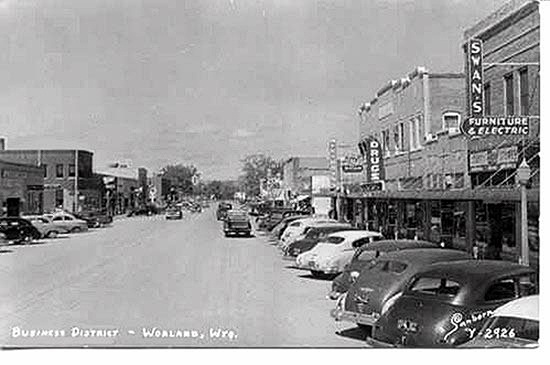 Worland, approx. 1950
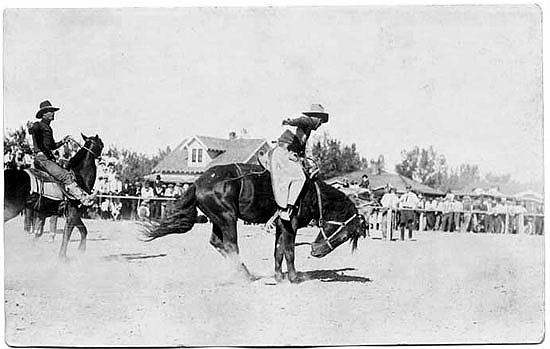 Worland Rodeo.
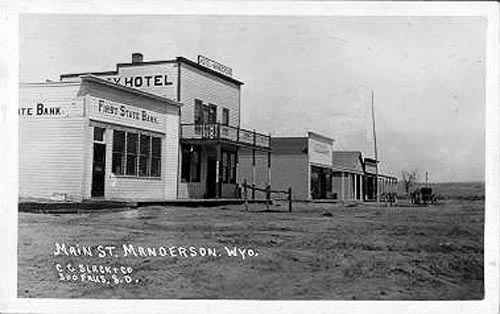 Manderson, Wyoming, undated The bank closed its doors in May 1924. Among its directors was stockman James A. Quiner. Manderson prior to the coming of the railroad was known as "Alamo."
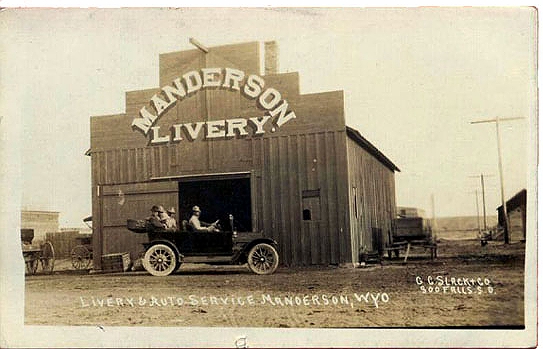 Manderson Livery, 1913
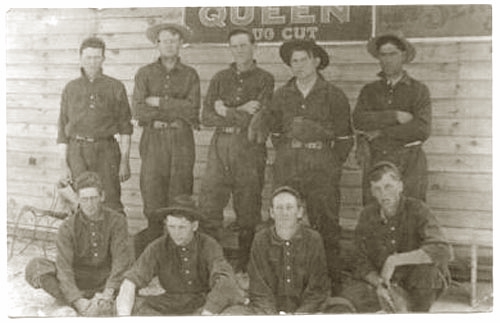 Manderson Baseball Team, 1908. Next page, Worland continued, Ten Sleep. |